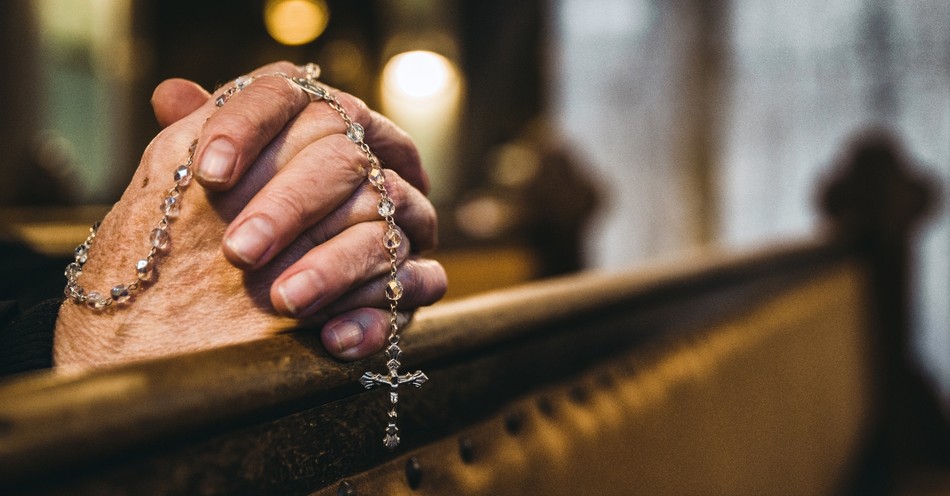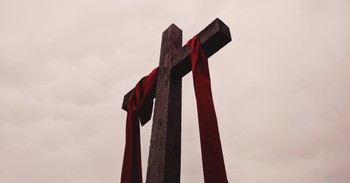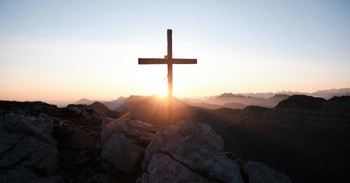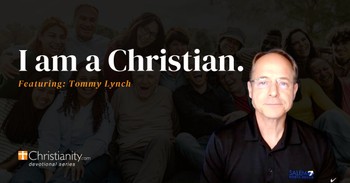The Prayers of the Faithful are a collection of corporate prayers that are spoken at western liturgical churches, such as Anglican, Catholic, Methodist, and Lutheran churches. As the name suggests, faithful followers of Christ gather together as a church body to make intercessory petitions for the Church, global issues, individuals, and their community.
Are the prayers of the faithful known by other names?
The Prayers of the Faithful also recognized as General Intercessions or Universal Prayer.
What Are Their Origins?
The Prayers of the Faithful were most likely inspired by the public prayers that took place in Jewish synagogues. With the commencement of the Early Church, this practice of making corporate petitions for the community and individuals in need was encouraged by Christian leaders, including Timothy (1 Timothy 2:1-8).
In the second century, the continuation of the Prayers of the Faithful are noted predominantly in the writings of the Christian apologist Justin Martyr. In his First Apology, which was published in AD 155, Justin Martyr addressed the Emperor Antoninus Pius, claiming that Christians were the “best helpers and allies in securing good order” for the Roman Empire.
Accordingly, Christian theologians such as Augustine of Hippo, who lived from AD 354-430, continued the conviction of practicing the Prayers of the Faithful. Augustine of Hippo was even said to have written, “Here we do not speak evil of anyone” on the walls of his lodgings.
By the fourth century, Roman rite mass included nine prayer petitions called “Solemn Prayers of Intercession,” which are still observed at Good Friday Mass today.
Over time, the practice of speaking the Prayers of the Faithful subsided. However, the Second Vatican Council, which mediated between the Catholic Church and modern-day society, reinstated the Prayers of the Faithful as the universal prayer in the 1963 Sacrosanctum Concilium, which is the Constitution on the Sacred Liturgy.
In Chapter Two, point 53, it states:
Especially on Sundays and feasts of obligation there is to be restored, after the Gospel and the homily, “the common prayer” or “the prayer of the faithful.” By this prayer, in which the people are to take part, intercession will be made for holy Church, for the civil authorities, for those oppressed by various needs, for all mankind, and for the salvation of the entire world.
Are the Prayers of the Faithful Mentioned in the Bible?
The Prayers of the Faithful find their origins in 1 Timothy 2:1-8:
I urge, then, first of all, that petitions, prayers, intercession and thanksgiving be made for all people — for kings and all those in authority, that we may live peaceful and quiet lives in all godliness and holiness. This is good, and pleases God our Savior, who wants all people to be saved and to come to a knowledge of the truth. For there is one God and one mediator between God and mankind, the man Christ Jesus, who gave himself as a ransom for all people. This has now been witnessed to at the proper time.
And for this purpose, I was appointed a herald and an apostle — I am telling the truth, I am not lying — and a true and faithful teacher of the Gentiles. Therefore, I want the men everywhere to pray, lifting up holy hands without anger or disputing.
When Are the Prayers of the Faithful Performed during Mass?
Roman rite Mass consists of four parts:
1. The Introductory Rites
2. The Liturgy of the Word
3. The Liturgy of the Eucharist
4. The Concluding Rites
The Prayers of the Faithful are performed at the conclusion of the Liturgy of the Word.
How Are the Prayers of the Faithful Structured?
The Prayers of the Faithful follow the General Instruction of the Roman Missal, a document providing detailed guidelines on the celebration of Mass and the Roman rite, which is the predominant liturgical rite of the Roman Catholic Church.
The Structure of the Prayers of the Faithful
The Prayers of the Faithful consist of three parts:
1. A brief introduction by the presider of the liturgy, who invites the congregation to pray.
2. The speaker of the petitions then proceeds. The congregation is encouraged to vocally affirm the speaker’s petitions by replying with brief invocations such as, “Lord, hear our prayer.”
3. The conclusion or oration to the Prayers of the Faithful is given by the presider.
Prayer Guidelines
Included in the guidelines is that the following four intentions should be included in all compositions of the Prayers of the Faithful:
1. Prayer for the Church
2. Prayer for public and governing authorities and for the salvation of mankind
3. Prayer for those burdened by adversity or difficulties
4. Prayer for the local community
The scope of prayer is designed like a funnel, where the petitions are first directed globally and are then tapered down micro-economically.
How Often Are the Prayers of the Faithful Performed in the Church Calendar?
The Prayers of the Faithful are performed at Sunday and weekday mass. They are also performed on special occasions, such as weddings, baptisms, and religious holidays, where the petitions are composed to align with the occasion at hand. They are also performed at funerals.
Who Can Offer the Prayers of the Faithful?
Customarily, the Prayers of the Faithful are performed by deacons or lectors. Often priests perform the petitions during a weekday Mass.
However, the Prayers of the Faithful can also be performed by a cantor, who traditionally sings solo verses or passages during the mass. Alternatively, a lay faithful from the congregation can also present the corporate petitions.
How Effective Are the Prayers of the Faithful?
Matthew 18:20 encourages us that when we come together in prayer, God is in our midst. James 5:16 also states that we should pray for one another, as our righteous petitions are powerful and effective.
Corporate prayer exemplifies the strength of our petitions and evokes intense divine responses, additionally, it also encourages church unity, disciplines us to put other’s needs before our own, and allows us to co-operate with God as the Body of Christ, all of which was Jesus’ aim when He founded the Church.
©iStock/Getty Images Plus/jarino47

Madeline Kalu is an Australian Christian writer and the co-founder of Jacob’s Ladder Blog and The Proverbs 31 Home. She is also the co-author of the “My Year of Miracles 2024” journal, which encourages a daily reflection on the miracles that God performs in our lives throughout 2024. Madeline lives in Germany with her husband Solomon and the family’s two cats who were rescued from the Ukrainian war zone.
This article is part of our prayer resources meant to inspire and encourage your prayer life when you face uncertain times. Remember, the Holy Spirit intercedes for us, and God knows your heart even if you can't find the words to pray.
Prayers for Healing
Morning Prayers
Prayers for Family
Prayers for Surgery
Prayers for Strength
Night Prayers Before Bed
Prayers for Protection
The Lord's Prayer: Our Father



